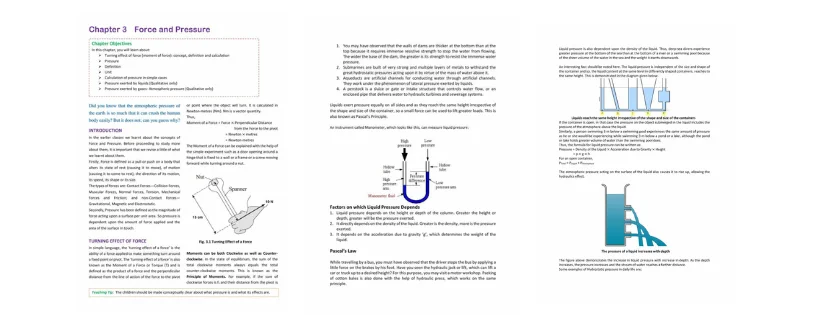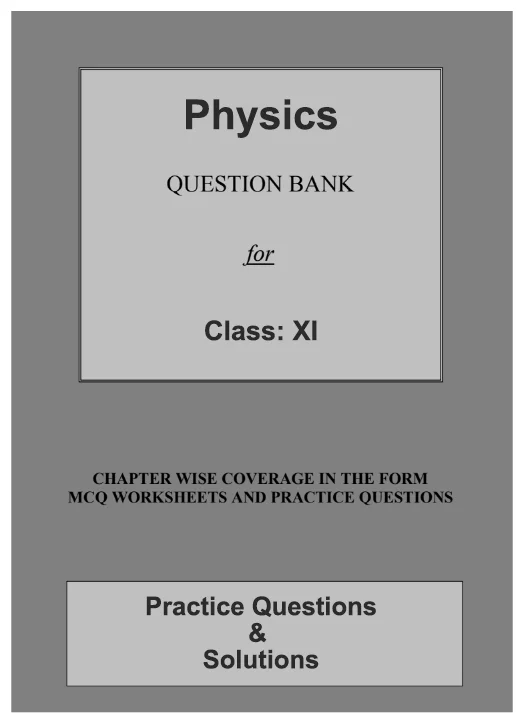In the relentless rhythm of modern existence, the concept of pressure serves as both an ever-present force and a catalyst for growth. From the demands of professional life to personal challenges, we find ourselves constantly under its influence. This blog delves into the multifaceted nature of pressure, exploring its psychological, physical, and societal dimensions. As we unravel the layers of stress, expectations, and resilience, we aim to redefine our relationship with pressure. Join us on a journey of understanding and empowerment, as we discover how to not just endure, but thrive in the face of life's inexorable pressures.
Unveiling the Complex World of Pressure:

What is Pressure?
Pressure, in a broad sense, refers to the force exerted on an object or individual per unit area. It manifests in various forms, influencing both physical and psychological realms. In physics, pressure is calculated by dividing the force by the area over which it is applied. Beyond the scientific context, the term extends to the demands, constraints, and expectations experienced in everyday life. Social, professional, and personal obligations create figurative pressure, impacting mental well-being. Understanding pressure involves recognizing its diverse manifestations, from atmospheric pressure to the stress of meeting deadlines or societal expectations. Navigating these pressures requires resilience, adaptability, and a holistic perspective.
Units of Pressure:
Pressure, a fundamental concept in physics and a pervasive force in our daily lives is a measure of the force applied per unit area. Its influence spans a vast spectrum, from atmospheric pressure shaping weather patterns to the stress we experience in meeting life's demands. To comprehend pressure fully, one must explore the various units used to quantify this force. In this exploration, we will delve into the diverse units of pressure, from the familiar atmospheres to the technical pascals, uncovering the significance and applications of each.
1. Atmosphere (atm): One of the most commonly encountered units, the atmosphere (atm), is atmospheric pressure at sea level. Defined as 1.01325 x 10^5 pascals, an atmosphere represents the pressure exerted by the Earth's atmosphere on all surfaces below it. This unit is crucial in meteorology and everyday scenarios, offering a baseline for comparing other pressure measurements.
2. Pascal (Pa): In the realm of the International System of Units (SI), the Pascal is the standard unit for pressure. Named after the French mathematician Blaise Pascal, it is equivalent to one newton of force per square meter. Widely used in scientific and engineering contexts, the Pascal provides a precise measure of pressure in various applications, including fluid dynamics, engineering design, and material science.
3. Bar: The bar, another unit of pressure, is commonly used in meteorology and industrial settings. One bar is equivalent to 100,000 pascals. While not as prevalent as the Pascal, the bar serves as a practical unit for expressing pressure in scenarios where larger values are involved, such as in weather systems and industrial processes.
4. Millimeter of Mercury (mmHg): Developed in the context of mercury barometers, the millimeter of mercury is a unit tied to atmospheric pressure. Standard atmospheric pressure is approximately 760 mmHg at sea level. This unit is often used in medical applications, particularly in measuring blood pressure. Understanding the mercury column's height provides insights into the force blood exerts on arterial walls during circulation.
5. Torr: Named after Evangelista Torricelli, an Italian physicist, the torr is another unit derived from mercury barometers. One torr is equivalent to one millimeter of mercury. Although the torr is not as widely used as the millimeter of mercury, it is still employed in scientific research, particularly in vacuum technology and pressure measurements.
The units of pressure, ranging from atmospheres to torrs, provide diverse perspectives on the force exerted on surfaces. Each unit caters to specific contexts, whether measuring atmospheric conditions, quantifying pressure in scientific experiments, or gauging blood pressure in medical settings. Understanding these units not only enhances scientific literacy but also empowers individuals to grasp the impact of pressure in various aspects of life. As we navigate the intricacies of pressure, from the macroscopic scale of atmospheric conditions to the microscopic realm of cellular processes, the units become invaluable tools for quantifying and comprehending this omnipresent force.
Factors Affecting Pressure:
Pressure is a dynamic force influenced by many factors, each contributing to its varied manifestations across different contexts. Temperature plays a pivotal role, as gases respond to changes by altering their pressure. According to the ideal gas law, an increase in temperature leads to higher pressure, and vice versa. Additionally, the altitude or depth within a fluid affects pressure; as one ascends in the atmosphere or descends in a liquid, pressure changes correspondingly due to the weight of the overlying substance.
The nature of the substance also impacts pressure. In liquids, depth and density are critical factors, while in gases, molecular motion and density are significant determinants. Moreover, external forces, such as applied stress or gravitational pull, contribute to pressure variations. Atmospheric pressure, a result of the Earth's gravitational pull on air molecules, varies with altitude.
Understanding these factors is essential for various applications, from predicting weather patterns to designing engineering structures. The intricate interplay of temperature, depth, substance characteristics, and external forces collectively shapes the dynamic and nuanced concept of pressure across scientific, environmental, and everyday scenarios.

CBSE Class 11th Downloadable Resources:
| 1. CBSE Class 11th Topic Wise Summary | View Page / Download |
| 2. CBSE Class 11th NCERT Books | View Page / Download |
| 3. CBSE Class 11th NCERT Solutions | View Page / Download |
| 4. CBSE Class 11th Exemplar | View Page / Download |
| 5. CBSE Class 11th Previous Year Papers | View Page / Download |
| 6. CBSE Class 11th Sample Papers | View Page / Download |
| 7. CBSE Class 11th Question Bank | View Page / Download |
| 8. CBSE Class 11th Topic Wise Revision Notes | View Page / Download |
| 9. CBSE Class 11th Last Minutes Preparation Resources | View Page / Download |
| 10. CBSE Class 11th Best Reference Books | View Page / Download |
| 11. CBSE Class 11th Formula Booklet | View Page / Download |
Being in CBSE class 11th and considering the board examinations, you need resources to excel. At TestprepKart we take great pride in providing CBSE class 11th all study resources in downloadable form for you to keep you going.
Below is the list of all CBSE class 11th Downloads available on TestprepKart for both Indian and NRI students preparing for CBSE class 11th in UAE, Oman, Qatar, Kuwait & Bahrain.
SAMPLE PRACTICE QUESTIONS OF SIGNIFICANT FIGURES :
Q1. What is pressure?
Answer: Pressure is the force exerted on an object or substance per unit area. It can be caused by various factors, including the weight of the atmosphere, external forces, or the nature of the substance itself.
Q2. How is pressure measured?
Answer: Pressure is commonly measured in atmospheres, pascals, bars, millimeters of mercury (mmHg), and torr. The choice of unit depends on the specific application and context.
Q3. What role does temperature play in pressure changes?
Answer: According to the ideal gas law, temperature and pressure are directly related to gases. An increase in temperature generally leads to higher pressure and a decrease in temperature results in lower pressure.
Q4. How does pressure vary with altitude?
Answer: Atmospheric pressure decreases with increasing altitude due to the decreasing weight of the air column above. This is why pressure is lower at higher elevations.
Q5. Can pressure be affected by the nature of the substance?
Answer: Yes, the characteristics of the substance, whether it's a gas, liquid, or solid, impact pressure. For example, in liquids, pressure increases with depth, while in gases, it depends on molecular motion and density.

| Class 11th CBSE Physics Chapters |
| Chapter1: UNITS AND MEASUREMENTS |
| Chapter2: MOTION IN A STRAIGHT LINE |
| Chapter3: MOTION IN A PLANE |
| Chapter4: LAWS OF MOTION |
| Chapter5: WORK, ENERGY AND POWER |
| Chapter6: SYSTEM OF PARTICLES AND ROTATIONAL MOTION |
| Chapter7: GRAVITATION |
| Chapter8: MECHANICAL PROPERTIES OF SOLIDS |
| Chapter9: MECHANICAL PROPERTIES OF FLUIDS |
| Chapter10: THERMAL PROPERTIES OF MATTER |
| Chapter12: KINETIC THEORY |
| Chapter13: OSCILLATIONS |
| Chapter14: WAVES |
| Class 11th CBSE Chemistry Chapters |
| Chapter1: SOME BASIC CONCEPTS OF CHEMISTRY |
| Chapter2: STRUCTURE OF ATOMS |
| Chapter3: CLASSIFICATION OF ELEMENTS AND PERIODICITY IN PROPERTIES |
| Chapter4: CHEMICAL BONDING AND MOLECULAR STRUCTURE |
| Chapter5: THERMODYNAMICS |
| Chapter6: EQUILIBRIUM |
| Chapter7: REDOX REACTIONS |
| Chapter8: ORGANIC CHEMISTRY – SOME BASIC PRINCIPLE AND TECHNIQUES |
| Chapter9: Hydrocarbons HYDROCARBONS |
| Class 11th CBSE Mathematics chapter |
| Chapter1: SETS |
| Chapter2: RELATIONS AND FUNCTIONS |
| Chapter3: TRIGONOMETRIC FUNCTIONS |
| Chapter4: COMPLEX NUMBER AND QUADRATIC EQUATIONS |
| Chapter5: LINEAR INEQUALITIES |
| Chapter6: PERMUTATIONS AND COMBINATIONS |
| Chapter7: BINOMIAL THEOREM |
| Chapter8: SEQUENCES AND SERIES |
| Chapter9: STRAIGHT LINES |
| Chapter10: CONIC SECTIONS |
| Chapter11: INTRODUCTION TO THREE-DIMENSIONAL GEOMETRY |
| Chapter12: LIMITS AND DERIVATIVES |
| Chapter13: STATISTICS |
| Chapter14: PROBABILITY |
| Class 8 Link soon |
| Class 9 Link soon |
| Class 10 Link soon |
| Class 12 Link soon |
Leave a Reply